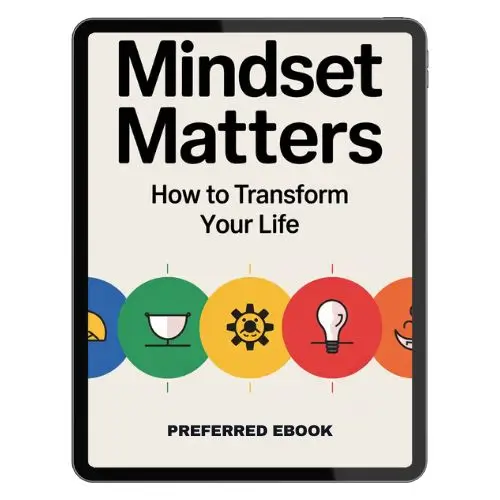Index
- Introduction
- Chapter 1: Understanding Yourself
- Chapter 2: The Power of Mindfulness
- Chapter 3: Cultivating Self-Focus
- Chapter 4: Breaking Free from Fear and Doubt
- Chapter 5: Building Meaningful Relationships
- Chapter 6: Pursuing Your Passions
- Chapter 7: Resilience and Stress Management
- Chapter 8: Defining Your Own Success
- Chapter 9: Embracing Change and Growth
- Conclusion
Introduction
You have entered the path of empowerment that happens through releasing everything. The travel guides you toward taking back your personal control and making your life the main priority while advancing yourself through growth. The swift pace of current times creates numerous external pressures which easily lead people to overwhelming feelings. The book provides essential tools which help you break away from your constraints to achieve happiness and personal fulfillment.
Chapter 1: Understanding Empowerment
Empowerment is more than just a buzzword; it’s about taking charge of your life and recognizing your inherent worth. Most of us concede to outside opinions when selecting options because we seek validation from others. Let’s dive into this concept together.
Meet Sarah. She was a marketing professional who worked countless nights late, trying to meet everyone’s expectations. She felt burned out and lost. One day, while reflecting on her morning coffee, Sarah had an epiphany. She realized that her happiness depended too much on what others thought of her. I walked around with an unnecessary weight of heavy rocks inside my backpack.
So, what did Sarah do? She started focusing on her strengths instead. She made a list of her accomplishments, big and small, and began to shift her mindset. She decided to place her faith in her decision-making abilities rather than attempt to gain approval from her superior or colleagues. This simple yet powerful change opened doors she never thought possible.
Key Takeaway: Empowerment begins with self-awareness. Take a moment to reflect on your strengths. What are the qualities that make you unique? Write them down. Self-value recognition enables you to pick decisions that resonate with who you truly are.
Remember, empowerment isn’t always a grand gesture; it’s often found in the small, everyday decisions we make. So, let’s take that first step together and embrace the power within you!
Chapter 2: The Power of Letting Go
Submission entails a challenging step which produces the highest level of mental liberation one can achieve. Imagine carrying a heavy backpack filled with expectations, worries, and the need for approval. Now picture yourself setting that bag down. Feels good, right? That’s the essence of “Let Them.”
Let’s talk about Mark. He was a dedicated teacher who felt overwhelmed by the constant pressure from parents and administrators. He spent more time worrying about what others thought than focusing on his students. One day, after a particularly stressful meeting, Mark decided enough was enough. He realized he was trying to control too many factors outside his influence.
Mark began practising the art of letting go. He started by identifying what truly mattered: his students’ learning and well-being. He let go of the need for approval and embraced his teaching style. This shift not only reduced his stress but also made him a more effective educator.
Action Step: Take a moment to reflect on your own life. Identify three areas where you’re holding on too tightly: work, relationships, or societal expectations. Write them down and consider how you can start letting go. What would change if you released that control?
Letting go isn’t about neglecting responsibilities; it’s about freeing yourself from unnecessary burdens. As you practice this, you’ll have more energy and clarity to focus on what truly matters. So, let’s begin this journey together, set that backpack down and feel the weight lift!
Chapter 3: Cultivating Self-Focus
In our busy lives, it’s easy to lose sight of ourselves. We often prioritize everything and everyone else, leaving little room for our own needs. However, cultivating self-focus is essential for personal growth and happiness.
Let’s meet Emily. As a busy mom and professional, she was constantly juggling responsibilities. One day, she realized she hadn’t taken a moment for herself in weeks. Feeling drained, she decided to try journaling. At first, it felt strange to write about her thoughts, but soon it became a lifeline.
By writing in her journal Emily uncovered what she deeply cared about as well as what realigning herself required. She spent time thinking about what passionate her and what dreams and fears she harbored. Through implementing journaling she established necessary limits which enabled her to make healthy priorities. Emily began to understand that setting personal time was essential rather than a selfish activity.
Exercise: Why not give journaling a try? Start with just five minutes a day. Write about your thoughts, feelings, and what you want in life. It doesn’t have to be perfect, just let your pen flow. You might be surprised at what you uncover.
Cultivating self-focus is about carving out space for yourself in a noisy world. By prioritizing your own needs and desires, you’ll find renewed energy and clarity. So, let’s take that first step together, grab a journal and start writing your story!
Chapter 4: Breaking Free from Fear and Doubt
Fear and self-doubt can be powerful obstacles, holding us back from pursuing our dreams. But what if we could learn to confront these feelings head-on? That’s where true growth begins.
Let’s look at Jake. He had always dreamed of being a writer, but every time he sat down to create, fear crept in. “What if no one likes my work?” he thought. This fear kept him from sharing his stories, and he felt stuck. One day, a friend encouraged him to try writing without judgment. Jake decided to give it a shot.
He set a timer for ten minutes and wrote without stopping, allowing his ideas to flow freely. At first, it was challenging, but slowly he began to silence his inner critic. He realized that writing was more about expressing himself than seeking approval.
Action Step: Think about your fears. Identify one that has held you back. Now, try a “fear challenge.” Write down your fear and then write a counter-statement. For example, if your fear is, “I’ll fail,” counter it with, “Failure is a stepping stone to success.”
Breaking free from fear takes practice, but with each small step, you’ll gain confidence. It is acceptable to accept your imperfections. Everyone passes through doubt yet the response one chooses defines the most important aspect. Together we can conquer your fears, which expose the path to your potential self.
Chapter 5: Building Meaningful Relationships
Healthy relationships are essential for our well-being, but they can sometimes feel complicated. The key lies in understanding the importance of boundaries and surrounding ourselves with the right people.
Take Lisa’s story. She was the go-to friend for everyone, always saying yes to requests, even when it drained her. But over time, she felt exhausted and unappreciated. One day, she realized that her friendships were often one-sided. Determined to change this, Lisa began to set clear boundaries.
She started by having honest conversations with her friends about her needs. Instead of agreeing to every invitation, she learned to say no when she needed time for herself. This shift not only improved her relationships but also allowed her to cultivate deeper connections with those who truly valued her.
Key Insight: Reflect on your relationships. Are there people who lift you or bring you down? Consider creating a “support network” list, identifying those who encourage and inspire you.
Building meaningful relationships takes effort, but it’s worth it. By establishing healthy boundaries, you create space for genuine connections. So, let’s embrace the idea that it’s okay to prioritize your well-being. Surround yourself with those who honour and uplift you, and watch your relationships flourish!
Chapter 6: Pursuing Your Passions
Identifying and pursuing your passions can be one of the most fulfilling journeys in life. Yet, many of us get caught up in daily routines and forget what truly excites us. Let’s explore how to reignite that spark!
Meet Tom. He was a corporate lawyer, but his heart lay in photography. For years, he pushed aside his passion, thinking it was impractical. One day, feeling unfulfilled, he decided to take a weekend photography class. That small step reignited his love for capturing moments.
As Tom began to set small, achievable goals, like completing a photo project each month, he felt a renewed sense of purpose. He started sharing his work online, and to his surprise, he received positive feedback. This encouraged him to pursue photography more seriously, eventually leading to a successful side business.
Action Step: Think about your passions. What activities make you lose track of time? Write down three passions you’d like to explore. Then, set one small goal for each. It could be as simple as dedicating an hour a week to that activity.
Pursuing your passions isn’t just about the result; it’s about enjoying the process. By taking small steps, you’ll find joy and fulfilment in your journey. So let’s take that leap together and start exploring what makes your heart sing!
Chapter 7: Resilience and Stress Management
Life is full of challenges, and building resilience is key to navigating those ups and downs. But how do we cultivate that strength? Let’s dive into the power of resilience and effective stress management.
Consider Mia. After losing her job unexpectedly, she felt overwhelmed and uncertain about the future. Instead of succumbing to despair, Mia decided to focus on what she could control. She found solace in mindfulness techniques by practicing meditation as a regular habit.
At first, it felt challenging to sit in silence, but with time, she found it calming. This practice helped her gain perspective and clarity. Mia developed skills to identify her stressful situations before she reacted to them more thoughtfully than she had in the past.
Exercise: Want to build your resilience? Try a simple mindfulness meditation for just five minutes each day. Choose a peaceful environment and shut your eyes before directing your attention to your breathing. When your thoughts detach from your present focus, lead them back to your breathing pattern.
Building resilience is about learning to adapt and bounce back from setbacks. Regular practice of mindfulness will improve your ability to control stress. Remember, it’s not about avoiding challenges; it’s about how you respond to them. Let’s embrace resilience together and face life’s challenges with confidence!
Chapter 8: Defining Your Own Success
Societal demands define success through costly houses and expensive vehicles with prestigious careers sectors. But what if success is something entirely different for you? Let’s explore how to create a personal definition of success that aligns with your values.
Meet Alex. Working in tech, he was always chasing promotions and accolades, believing that climbing the corporate ladder equated to success. But after achieving a high position, he felt unfulfilled. One day, he attended a workshop that encouraged participants to reflect on their values.
Through this process, Alex realized that true success for him meant having a work-life balance, spending time with family, and engaging in creative projects. He decided to create a vision board that represented these values, pictures of family gatherings, travel, and art supplies.
Action Step: Take some time to define what success means to you. Write down your core values, what truly matters in your life? Then, create your vision board or list of goals that reflect this personal definition.
Remember, success isn’t a one-size-fits-all concept; it’s deeply personal. Your goals will lead to increased fulfillment when you match them to your core values. Let’s redefine success together, focusing not on what others think, but on what resonates with your heart!
Chapter 9: Engaging with Your Community
People naturally resist the natural changes that life presents to them. Acceptance of change will open doors for remarkable development as well as fresh possibilities. Let’s explore how to navigate this journey with an open heart.
Take the story of Sarah. After years in a stable job, she felt restless and yearned for something new. One day, she decided to take a leap of faith and enrol in a cooking school, something she had always dreamed of. Though it was daunting, the experience challenged her in the best ways.
Initially, Sarah struggled with self-doubt and the fear of failure. However, as she embraced the learning process, she discovered her passion for culinary arts. Each new recipe was a lesson, and with each challenge, her confidence grew.
Action Step: Reflect on a change you’ve been hesitant to embrace. What fears are holding you back? Write them down and then counter each fear with a positive affirmation or potential benefit of taking that leap.
Embracing change is about shifting your mindset. Instead of seeing this as a danger, consider it as a chance to develop. Remember, every change brings new possibilities. Let’s welcome change together, opening ourselves to the exciting adventures that await!
Conclusion
Your path toward personal growth will succeed through surrender and individual attention. Review the lessons described in this book as you think about ways to use them in your personal development. Empowerment begins with you.















